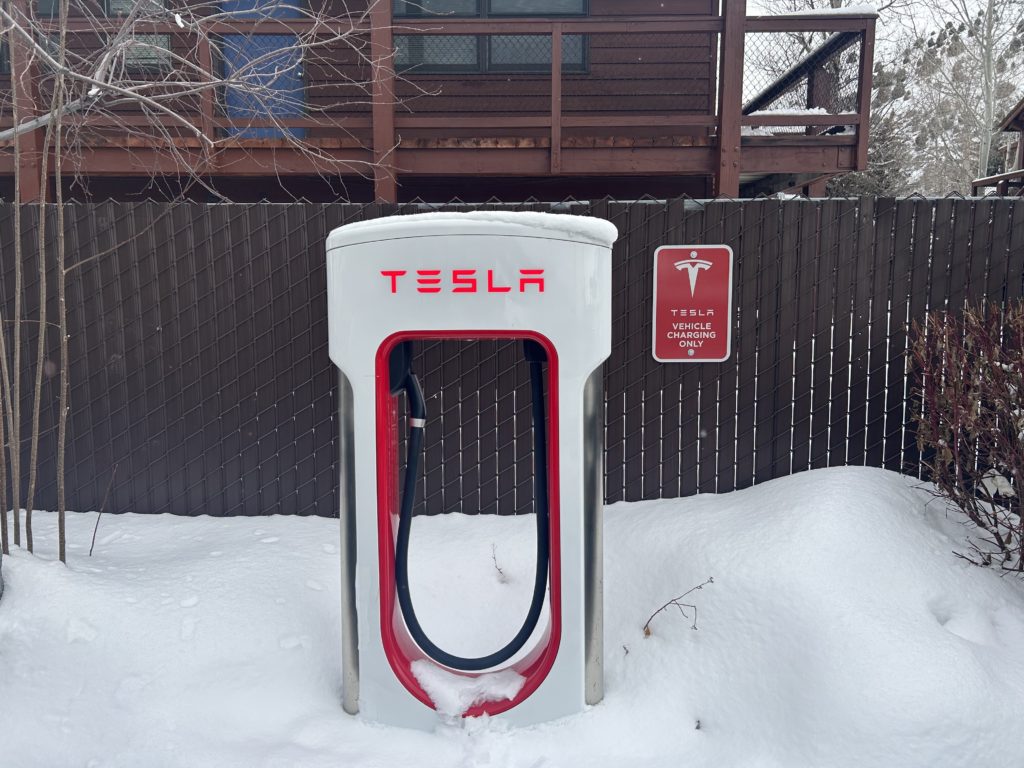Mercurial Tesla CEO Elon Musk fired his entire EV supercharger team at the end of April. Now he’s hiring some folks back. What does all this mean for the US supercharger network and Tesla rivals BP Pulse, EVGo, Ionna and others?

Tesla’s Supercharger network is arguably Musk’s major accomplishment. Sure, he’s sent rockets (and his Tesla Roadster) to space, but most of us care less about that and more about being able to quickly and reliably charge our EVs.
His abrupt decision to cut the entire team behind the Supercharger network put everyone in a tizzy, including other EV makers whose sales depend on customers feeling confident of a growing network of charging stations across the US.
As with many things Elon, though, give the man a week and he’ll probably change his mind.
Sure enough, Musk took to X (FKA Twitter) to ‘reassure’ folks:
Given Tesla’s previous efforts to open its charging network to rival automakers and its overall success with Superchargers, this makes sense, sort of.
The competition
The good news is that while Tesla’s actions raise eyebrows (and blood pressure of its employees), sparking concerns about the future of its charging network, it also opens the door for competitors.
Step up BP Pulse
The greenwashing EV charging arm of British Petroleum, BP Pulse says it plans to invest $1 billion by 2030 to expand its charging network across the US.
And it made no bones about wanting to snap up any Supercharger sites (and employees) Tesla has lost interest in. BP Pulse’s CEO said it “is aggressively looking to acquire real estate to scale our network, which is a heightened focus following the recent Tesla announcement.”
If there are stranded real estate partners who are looking for someone to call, they should feel free to pick up the phone and call me or look me up on LinkedIn.
Sujay Sharma, chief executive officer, bp pulse Americas, in an interview with Bloomberg.
- BP Pulse already plans to install more than 3,000 charging points through Gigahubs with 12 or more chargers. It also has a deal with Tesla to purchase around $100 million in Tesla Supercharger hardware, which is set for installation through 2024 into 2025.
- BP Pulse seems to be focusing on adding charging infrastructure on the west coast of the US, in the north-east, across the Sun Belt, and for the Great Lakes region.
- Confusingly, though, it’s also been reported by Reuters that BP laid off 10 percent of its EV charging team recently too (though most employees moved divisions and weren’t actually fired). While not as dramatic as firing the entire department, these cuts seem to be a result of underwhelming growth in its commercial EV fleets.
EVGo – going after Tesla
Charging network firm EVGo and ride-hailing and charging startup Revel have also shown interest in capitalizing on Tesla pulling back on plans to at some sites.
- Those sites may include locations where Tesla has already won federal funding through the Biden Administration’s National Electric Vehicle Infrastructure (NEVI) program.
- That means smaller players in the charging market could score coveted federal funds to bump start their own networks.
- When EVGo’s CEO Badar Khan said in an earnings call that the company was interested in scooping up abandoned Tesla sites and supercharger staff, EVGo shares rose 13%. EVGo doesn’t have the best track record for reliable charging services, so it’s easy to see why shareholders like the idea of EVGo effectively transitioning into a Supercharger style network using proven Tesla technology.
It’s no secret that aside from Tesla chargers, most EV charging is a hassle. With Tesla’s Superchargers, you can start charging your EV within seconds of pulling up and plugging it in. The charging cost is automatically billed to your paired credit card and you don’t have to tap, use an app, or fiddle with credit cards.
Their speed and ease of use also makes Superchargers safer, especially for women and visible minorities who want to minimize time standing around at a charging station alone in the middle of nowhere.
Who else is in the fray?
Blink Charging is another player in the mix. Albeit much smaller than BP Pulse and EVGo, Blink Charging CEO Brendan Jones said in an earnings call that the company was interested in snapping up Supercharger sites Tesla’s lost interest in.
Finally, Ionna is another one to watch. This newer charging network is the brainchild of seven major automakers:
- BMW
- GM
- Honda
- Hyundai
- Kia
- Stellantis
- Mercedes-Benz.
In February, Ionna received regulatory approval in the US and the group plans to install more than 30,000 fast-chargers across North America. Mercedes-Benz has said it plans to create charging stations with lounges (how very Mercedes). Meanwhile, GM is working with EVGo and gas station chain Pilot Travel Centers to install chargers along highways in the US. That real estate probably just got a lot cheaper, thanks to Tesla pulling back.
Basically, the whole space is a mess.
However, while Musk’s firing of the Supercharger team initially looked like bad news for EVs, it may actually be cause for optimism. By creating breathing room, even temporarily, in the EV charging market. Tesla could supercharge potential investments from Ionna, BP Pulse, EVGo, Revel, and others.
And those investments are heavily needed.
Bloomberg NEF estimates that 400,000 ultra-fast chargers will be required to service 40 million EVs by 2030. For the same timeframe, the National Renewable Energy Laboratory estimates that EV users in the US will need:
- 182,000 publicly accessible fast charging ports
- 1 million Level 2 charging ports at publicly accessible locations.
So far, Tesla owns a whopping 74% of all high-speed chargers in North America, and has a stranglehold on the space.
I do hate a monopoly, so I’m seeing this internal combustion as an engine for expansion and innovation in the EV charging market.